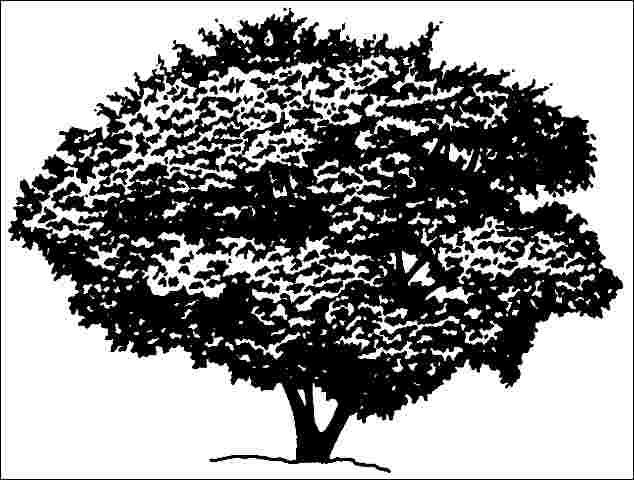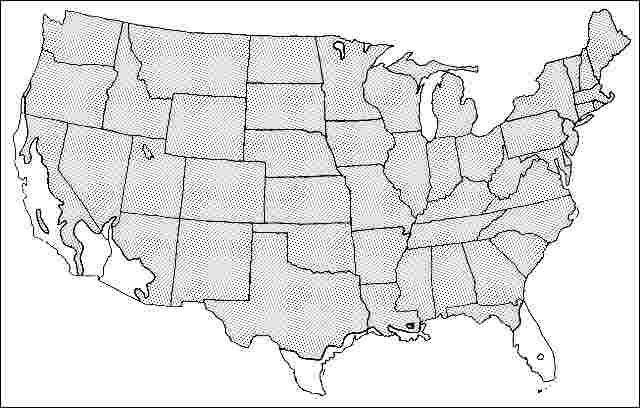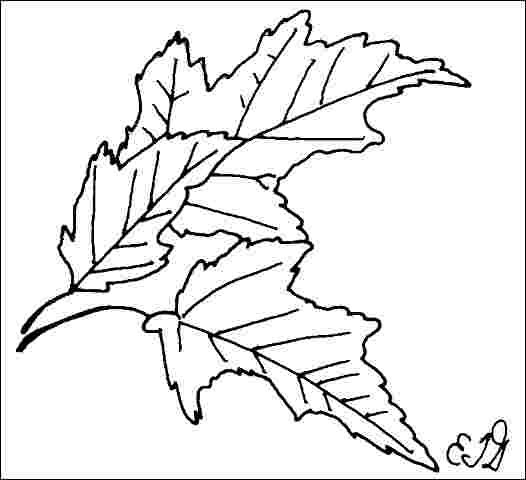Introduction
Amur maple is an excellent, low-growing tree for small yards and other small-scale landscapes. It can be grown as a multi-stemmed clump or can be trained into a small tree with a single trunk up to 4 to 6 feet tall. This cultivar (or cultivar complex) is known to have bright red fruit which is very showy. The tree grows about 20 to 30 feet tall and has an upright, rounded, finely branched growth habit which creates dense shade under the crown. Due to excessive branchiness, some pruning is required early in the life of the tree to create dominant major branches. Amur maple can grow rapidly when it is young if it receives water and fertilizer, but it is well-suited for planting close to power lines since it slows down and remains small at maturity.

General Information
Scientific name: Acer ginnala
Pronunciation: AY-ser jin-NAY-luh
Common name(s): 'Red Fruit' Amur maple
Family: Aceraceae
USDA hardiness zones: 3A through 8B (Fig. 2)
Origin: not native to North America
Invasive potential: invasive non-native
Uses: Bonsai; screen; hedge; specimen; street without sidewalk; deck or patio; tree lawn 3-4 feet wide; tree lawn 4-6 feet wide; tree lawn > 6 ft. wide; container or planter
Availability: not native to North America

Description
Height: 20 to 30 feet
Spread: 15 to 25 feet
Crown uniformity: symmetrical
Crown shape: spreading, round
Crown density: dense
Growth rate: moderate
Texture: fine
Foliage
Leaf arrangement: opposite/subopposite (Fig. 3)
Leaf type: simple
Leaf margin: serrate, lobed, double serrate
Leaf shape: ovate
Leaf venation: pinnate, palmate
Leaf type and persistence: deciduous
Leaf blade length: less than 2 inches, 2 to 4 inches
Leaf color: green
Fall color: red
Fall characteristic: showy

Flower
Flower color: white/cream/gray
Flower characteristics: not showy
Fruit
Fruit shape: elongated, oval
Fruit length: .5 to 1 inch
Fruit covering: dry or hard
Fruit color: red
Fruit characteristics: does not attract wildlife; showy; fruit/leaves not a litter problem
Trunk and Branches
Trunk/bark/branches: branches droop; not showy; typically multi-trunked; thorns
Pruning requirement: needed for strong structure
Breakage: resistant
Current year twig color: gray, brown
Current year twig thickness: thin, medium
Wood specific gravity: unknown
Culture
Light requirement: full sun, partial sun or partial shade, shade tolerant
Soil tolerances: clay; sand; loam; acidic; alkaline; well-drained
Drought tolerance: moderate
Aerosol salt tolerance: moderate
Other
Roots: not a problem
Winter interest: yes
Outstanding tree: yes
Ozone sensitivity: unknown
Verticillium wilt susceptibility: susceptible
Pest resistance: resistant to pests/diseases
Use and Management
The main ornamental value of amur maple is the brilliant red fall foliage color and fruit which sports bright pink wings. It is a durable tree, tolerating poor soil, but will grow less vigorously in the southern end of its range. It will leaf scorch in dry summers in full sun but is very drought-tolerant and will not die-back. Most drought-tolerant in partial shade. The plant is sometimes used in hedges or screens, and can be used for planting along streets beneath power lines. It makes a nice specimen or patio tree.
There are several cultivars including 'Compactum', which is smaller, 'Durland Dwarf', and 'Bailey Compact' has a compact, dark green, rounded crown form. It requires no pruning to develop a "perfect" round crown and is pest-free.
Pests
Amur maple is usually pest-free.
Aphids infest maples, usually Norway maple, and may be numerous at times. High populations can cause leaf drop. Another sign of heavy aphid infestation is honey dew on lower leaves and objects beneath the tree. Aphids are controlled by spraying or they may be left alone. If not sprayed, predatory insects will bring the aphid population under control.
Scales are an occasional problem on maples. Perhaps the most common is cottony maple scale. The insect forms a cottony mass on the lower sides of branches. Scales are usually controlled with horticultural oil sprays applied in spring before growth begins. Scales may also be controlled with well-timed sprays to kill the crawlers.
If borers become a problem it is an indication the tree is not growing well. Controlling borers involves keeping trees healthy. Chemical controls of existing infestations are more difficult. Proper control involves identification of the borer infesting the tree then applying insecticides at the proper time.
Diseases
Verticillium wilt symptoms are wilting and death of branches. Infected sapwood will be stained a dark or olive green, but staining can't always be found. If staining can not be found, do not assume the problem is not verticillium wilt. Severely infected trees probably can't be saved. Lightly infected trees showing only a few wilted branches may be pulled through. Fertilize and prune lightly infected trees. This treatment will not cure the problem but may allow the tree to outgrow the infection. Girdling roots will cause symptoms which mimic verticillium wilt.
Scorch occurs during periods of high temperatures accompanied by wind. Trees with diseased or inadequate root systems will also show scorching. When trees do not get enough water they scorch. Scorch symptoms are light brown or tan dead areas between leaf veins. The symptoms are on all parts of the tree or only on the side exposed to sun and wind. Scorching due to dry soil may be overcome by watering. If scorching is due to an inadequate or diseased root system, watering may have no effect.
Tar spot and a variety of leaf spots cause some concern among homeowners but are rarely serious enough for control.